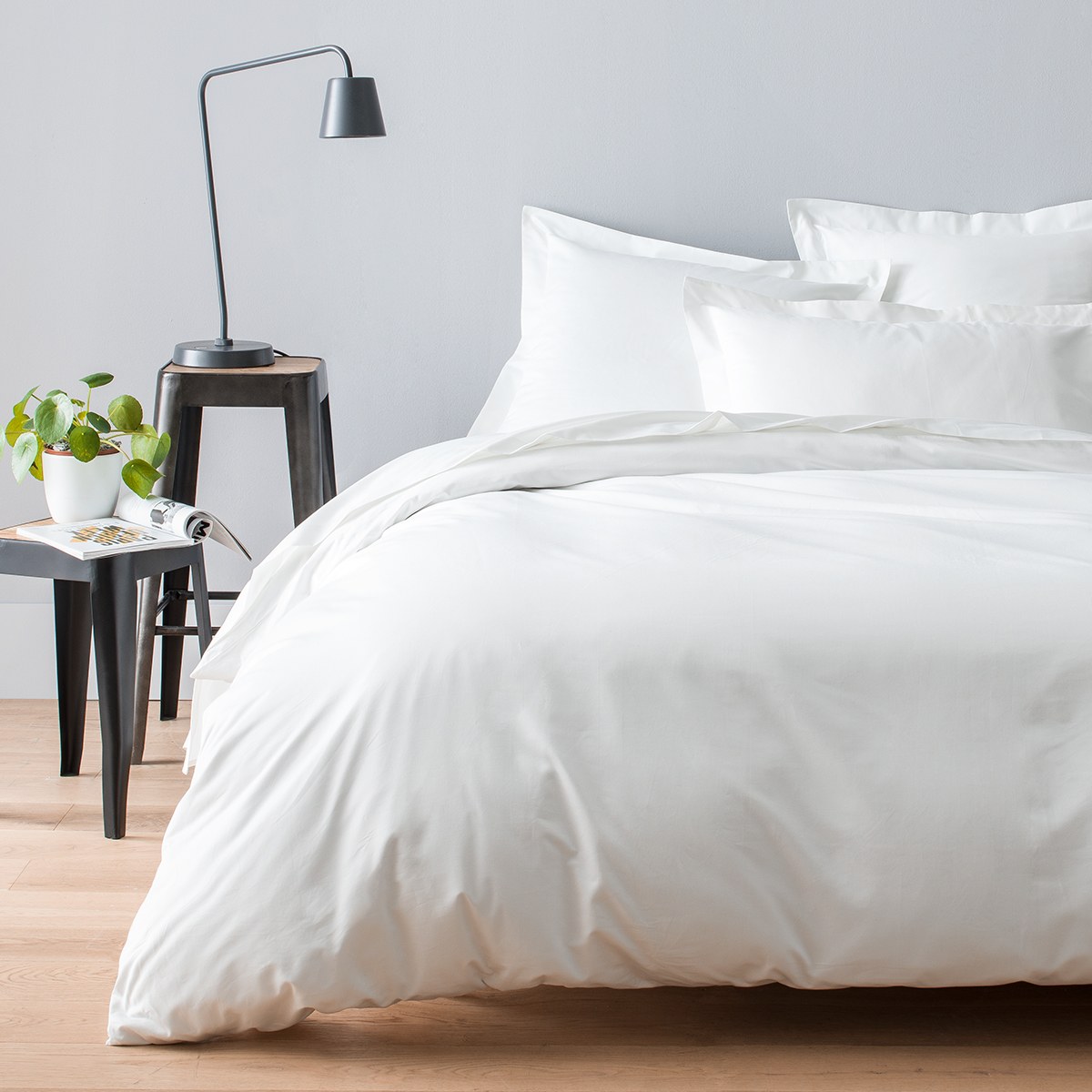Egyptian cotton
Cotton is the plant fibre that surrounds the seeds of the cotton plant. Egyptian cotton originally came from Brazil. It was the founder of Egypt, Mohamed Ali Pasha, who imported it to the land of the pyramids in the IXᵉ century. At that time, it was not yet the Egyptian cotton we know. The latter was the fruit of many years of cultivation, which led to the appearance of new cotton plants of better quality. And so Egyptian cotton was born. Today, it is the highest quality cotton in the world. It is highly prized by luxury household linen brands for its softness, durability and easy care.

The quality of Egyptian cotton: growing conditions
Egyptian cotton is grown along the Nile from the "Gossypium barbadense" species of cotton. The climatic conditions in this region and the fertility of the soil, in addition to its long growing season, are the ingredients that give this fibre its exceptional quality. This is why, despite the fact that 'Gossypium barbadense' is currently grown in other countries such as India, the United States and China, the quality cannot match that grown in Egypt.
The fact remains, however, that Gossypium barbadense, grown in other countries known as Pima and Supima, can be used to make high-quality household linen because of the length of its fibre, just like Egyptian cotton. Pima is gr
The Cotton Egypt Association issues certificates of authenticity for Egyptian cotton, guaranteeing the origin of the cotton used. This is marked by the association's logo on the manufacturer's product. So before you buy Egyptian cotton, be sure to check for this logo to be sure of the authenticity of the Egyptian cotton.

Egyptian cotton, the linen material par excellence
Egyptian cotton is mainly used by manufacturers of luxury household linen. And for good reason: its long fibres are the source of the finest yarns. But despite this fineness, they are no less resistant. This makes them less prone to pilling or linting. What's more, products made from Egyptian cotton are breathable and hypoallergenic, making them ideal for bed sheets and pillowcases.
In order to obtain fabric of such quality, Egyptian cotton is hand-picked, so that its fibres remain straight and intact. Once harvested, the cotton is framed. This stage involves untangling the fibres and cleaning them to obtain a long ribbon. The fibres are then combed to remove the shortest ones, because the longer and finer the fibres, the softer, smoother and shinier the fabric. This also ensures that only the strongest fibres are retained. The result is a fabric that's comfortable, soft, smooth and silky, but also long-lasting, to the delight of the house fairies!

Egyptian cotton is the finest cotton in the world, and the following characteristics distinguish it from other natural fibres:
- The long cotton fibres make it possible to produce the finest yarns without sacrificing strength.
- Strong fibres make fabrics stronger and more resistant to "pilling" or linting.
- Its moisture-absorbing properties allow for better heat exchange during the night.
- The long, fine fibres form an extremely soft fabric. Egyptian cotton is picked by hand, which guarantees its purity. Hand-picking places no stress on the fibres - unlike machine-picking - leaving them straight and intact.
All these factors have made Egyptian cotton the best cotton in the world. It's best to buy Egyptian cotton only from brands you trust, to make sure you're really getting 100% Egyptian cotton.

Looking after your Egyptian cotton is child's play
One of the advantages of Egyptian cotton is that it is easy to care for. It is advisable to wash it before using it for the first time. It's even better to soak the linen overnight in cold water to relax the fibres. If you have a set, washing the items together is ideal, especially if they are coloured or printed. For machine washing, a maximum temperature of 40°C is recommended. A low temperature preserves the quality of the linen. A temperature of 60°C is tolerated only if there is a large stain. What's more, products made up mainly of natural ingredients are ideal for caring for Egyptian cotton. For drying, nothing beats the line-drying method. Failing that, machine drying should be done at a moderate temperature, just like washing. Taking the clothes out before they are completely dry will make them softer and easier to iron. Finally, you should know that while other fabrics deteriorate with each wash, Egyptian cotton gets softer with each wash!



This site is protected by reCAPTCHA and the Google Privacy Policy and Terms of Service apply.